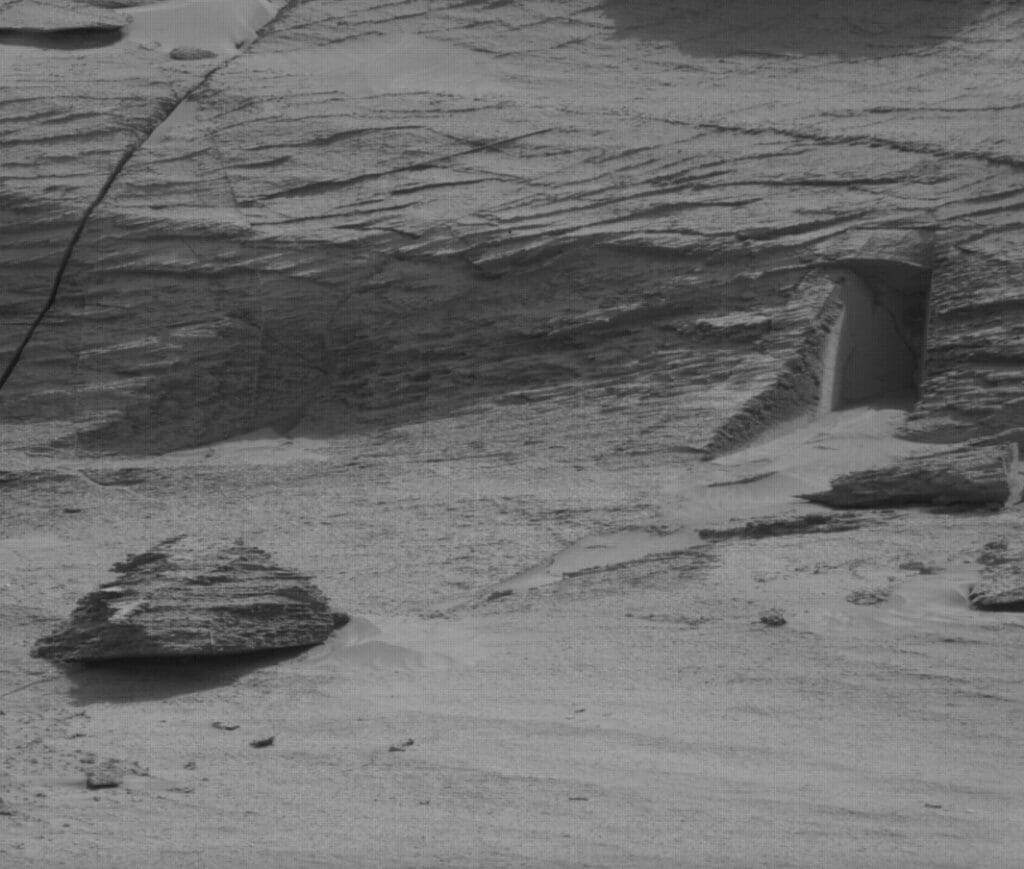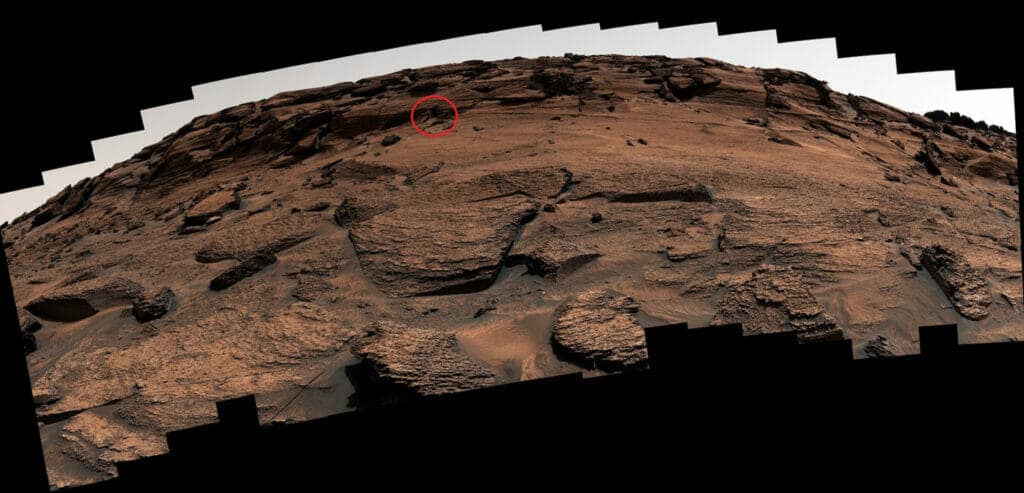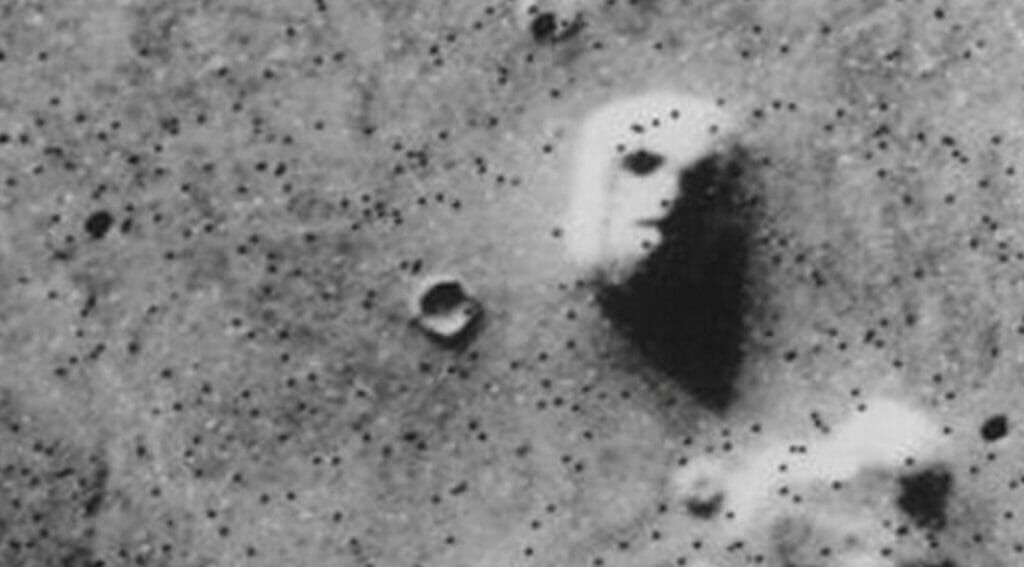So is there life on Mars after all? Recent images from NASA show what appears to be an entrance carved in stone. It could also be some kind of entrance to a bunker. The photographs appear extremely real and suggest that creatures have had a hand here. But that's not the case. The phenomenon can be explained psychologically .
Life on Mars! What has been the speculation about it!
Now these assumptions are being fueled again. The NASA rover “Curiosity” took an image on Mars that shows a gate or entrance gate that appears to have been carved into stone. The rover took the image on May 7, 2022 and since then there has been speculation that it is an extraterrestrial construction. But is that really it or is our perception playing tricks on us? In any case, the recording caused such a stir on the Internet that NASA explained about it on the Facebook account of the Mars rover “Curiosity” .
NASA's statement said:

“Some of you have noticed this picture I took on Mars. Sure, it may look like a tiny door, but it's really a natural geological feature! It may simply *look* like a door because your mind is trying to make sense of the unknown. (This is called “Pareidolia” –> go.nasa.gov/3sGhC8l )”

The explanation also describes the second image, which shows a zoom view:
“In it you can see a small crack (>30 cm in size) between two rock quarries. There are several linear fractures in the hill – but at this point several fractures intersect, allowing the rock to fracture at such sharp angles.”
So there is no proof that Mars is inhabited.
A phenomenon called pareidolia is responsible for the supposed goal. In this phenomenon, the brain tries to recognize familiar things in unknowns. Each of us probably knows this when we look at a cloud. We're looking for familiar patterns here. This phenomenon has occurred several times in connection with Mars. A floating spoon, a pyramid and even a female figure could be explained with it.
The perception effect
Whether in clouds, in sockets or in elevations - people try to recognize faces everywhere. This phenomenon has been called “pareidolia” since the 1950s. The term comes from Greek and means something like “mirage” (Greek para = next to, past, here more in the meaning of “wrong” and Greek eídōlon = form, appearance, image). Canadian and Chinese researchers won the Ig Nobel Prize in 2014, which is awarded for curious yet serious research. They had investigated what happens in the brain during pareidolia.
In a Stern interview, psychologist Rainer Mausfeld from the University of Kiel explains the phenomenon by saying that it is extremely important for people and their social interactions to recognize faces as such. “For socially organized creatures, it is the most important concept for docking with people like me.” Even infants are able to perceive faces. HERE
Mars face
Mars excited the public as early as 1976 with photographs of its surface. The Viking 1 space probe photographed a rock structure in the Martian highland Cydonia Mensae. The image caused a stir because it appeared to show a face carved into the rocky structure. Despite NASA's explanation, speculation continued - and still does.

Even in the current case, no extraterrestrials have a hand in it. The fact that this supposed entrance is a combination of several straight fractures in the rock that created this rectangular opening is unspectacular. But the facts are often more boring than the stories we imagine.
CONCLUSION
No, it is not a gate or a structure made by living creatures on Mars. Behind this is a perceptual effect called pareidolia.
Sources:
stern.de
Facebook account of the Mars rover “Curiosity”
HNA.de
Also read:
- Many people don't know what pareidolia is... but most have experienced it! [ Continue reading …]
- Fact check: A gigantic alien face in Antarctica? [ Continue reading …]
Notes:
1) This content reflects the current state of affairs at the time of publication. The reproduction of individual images, screenshots, embeds or video sequences serves to discuss the topic. 2) Individual contributions were created through the use of machine assistance and were carefully checked by the Mimikama editorial team before publication. ( Reason )

